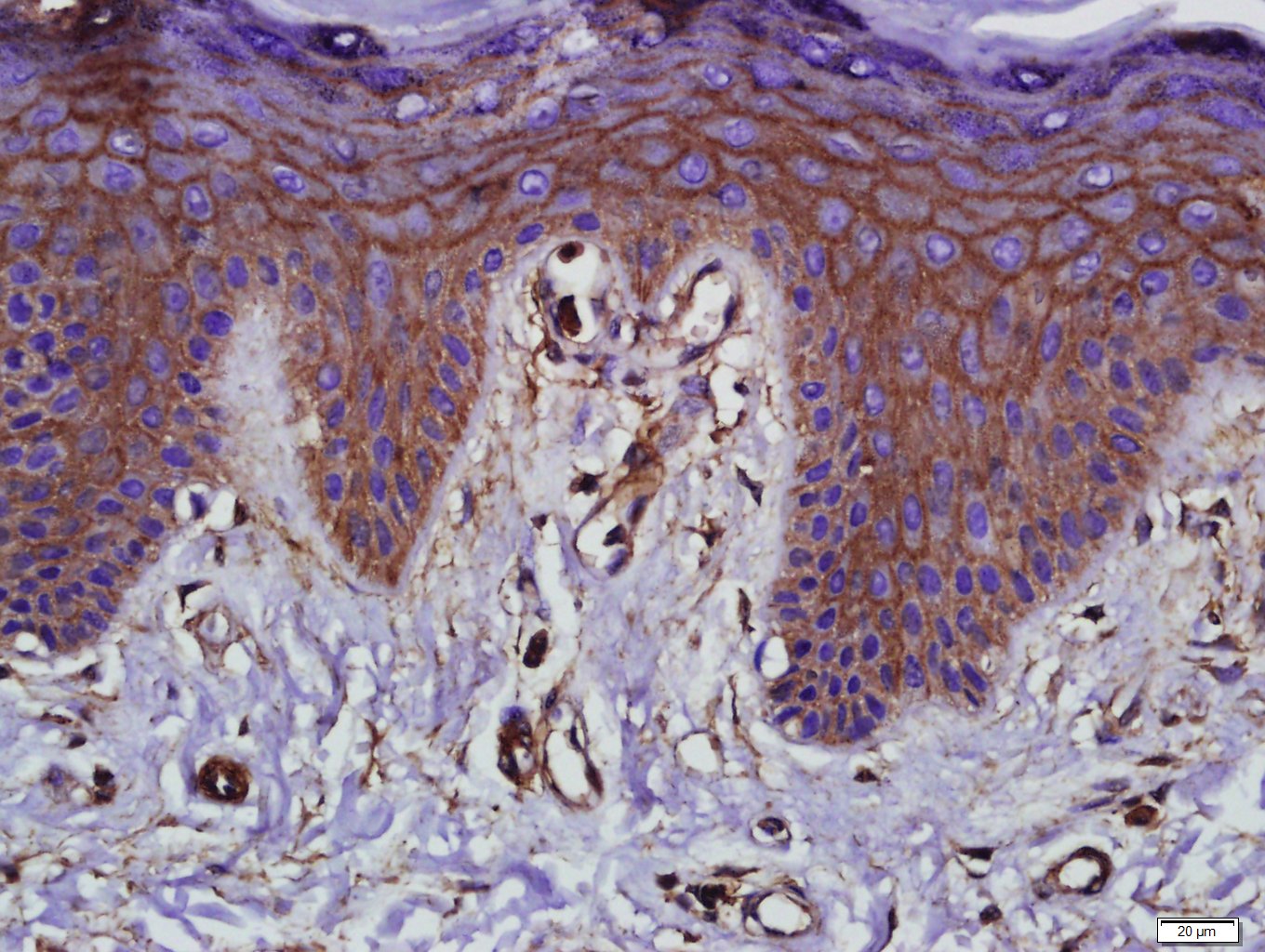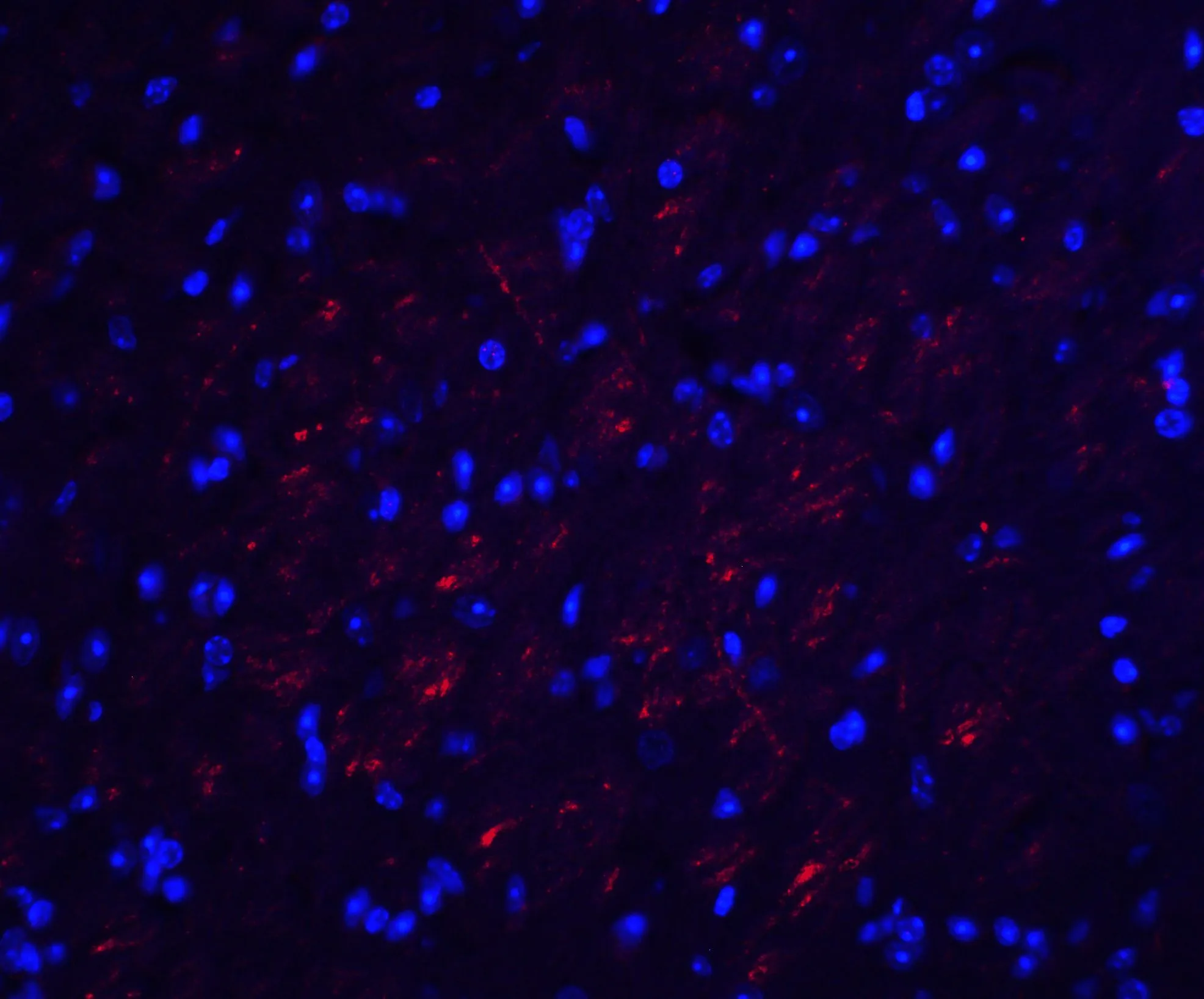Occludin antibody
GTX114949
ApplicationsImmunoFluorescence, Western Blot, ImmunoCytoChemistry, ImmunoHistoChemistry, ImmunoHistoChemistry Frozen, ImmunoHistoChemistry Paraffin
Product group Antibodies
ReactivityHuman, Monkey, Mouse, Rat
TargetOCLN
Overview
- SupplierGeneTex
- Product NameOccludin antibody
- Delivery Days Customer9
- Application Supplier NoteWB: 1:500-1:3000. IHC-P: 1:100-1:1000. IHC-Fr: 1:100-1:1000. *Optimal dilutions/concentrations should be determined by the researcher.Not tested in other applications.
- ApplicationsImmunoFluorescence, Western Blot, ImmunoCytoChemistry, ImmunoHistoChemistry, ImmunoHistoChemistry Frozen, ImmunoHistoChemistry Paraffin
- CertificationResearch Use Only
- ClonalityPolyclonal
- Concentration1.25 mg/ml
- ConjugateUnconjugated
- Gene ID100506658
- Target nameOCLN
- Target descriptionoccludin
- Target synonymsBLCPMG, PPP1R115, PTORCH1, occludin, phosphatase 1, regulatory subunit 115
- HostRabbit
- IsotypeIgG
- Protein IDQ16625
- Protein NameOccludin
- Scientific DescriptionThis gene encodes an integral membrane protein that is required for cytokine-induced regulation of the tight junction paracellular permeability barrier. Mutations in this gene are thought to be a cause of band-like calcification with simplified gyration and polymicrogyria (BLC-PMG), an autosomal recessive neurologic disorder that is also known as pseudo-TORCH syndrome. Alternative splicing results in multiple transcript variants. A related pseudogene is present 1.5 Mb downstream on the q arm of chromosome 5. [provided by RefSeq, Apr 2011]
- ReactivityHuman, Monkey, Mouse, Rat
- Storage Instruction-20°C or -80°C,2°C to 8°C
- UNSPSC12352203
References
- Chou HC, Cheng CM, Yang CH, et al. DUSP3 regulates phosphorylation-mediated degradation of occludin and is required for maintaining epithelial tight junction. J Biomed Sci. 2022,29(1):40. doi: 10.1186/s12929-022-00826-xRead this paper
- Fan X, Chen H, Xu C, et al. S1PR3, as a Core Protein Related to Ischemic Stroke, is Involved in the Regulation of Blood-Brain Barrier Damage. Front Pharmacol. 2022,13:834948. doi: 10.3389/fphar.2022.834948Read this paper
- Muranyi W, Schwerk C, Herold R, et al. Immortalized human choroid plexus endothelial cells enable an advanced endothelial-epithelial two-cell type in vitro model of the choroid plexus. iScience. 2022,25(6):104383. doi: 10.1016/j.isci.2022.104383Read this paper
- Wu C, Du M, Yu R, et al. A novel mechanism linking ferroptosis and endoplasmic reticulum stress via the circPtpn14/miR-351-5p/5-LOX signaling in melatonin-mediated treatment of traumatic brain injury. Free Radic Biol Med. 2022,178:271-294. doi: 10.1016/j.freeradbiomed.2021.12.007Read this paper
- Watanabe D, Nakagawa S, Morofuji Y, et al. Characterization of a Primate Blood-Brain Barrier Co-Culture Model Prepared from Primary Brain Endothelial Cells, Pericytes and Astrocytes. Pharmaceutics. 2021,13(9). doi: 10.3390/pharmaceutics13091484Read this paper
- Cheng YQ, Wu CR, Du MR, et al. CircLphn3 protects the blood-brain barrier in traumatic brain injury. Neural Regen Res. 2022,17(4):812-818. doi: 10.4103/1673-5374.322467Read this paper
- Petrella C, Strimpakos G, Torcinaro A, et al. Proneurogenic and neuroprotective effect of a multi strain probiotic mixture in a mouse model of acute inflammation: Involvement of the gut-brain axis. Pharmacol Res. 2021,172:105795. doi: 10.1016/j.phrs.2021.105795Read this paper
- Li B , He X , Jin HY , et al. Beneficial effects of Dendrobium officinale on metabolic hypertensive rats by triggering the enteric-origin SCFA-GPCR43/41 pathway. Food Funct. 2021,12(12):5524-5538. doi: 10.1039/d0fo02890hRead this paper
- Busatto S, Yang Y, Walker SA, et al. Brain metastases-derived extracellular vesicles induce binding and aggregation of low-density lipoprotein. J Nanobiotechnology. 2020,18(1):162. doi: 10.1186/s12951-020-00722-2Read this paper
- Zhang LY, Zhou T, Zhang YM, et al. Guiqi Baizhu Decoction Alleviates Radiation Inflammation in Rats by Modulating the Composition of the Gut Microbiota. Evid Based Complement Alternat Med. 2020,2020:9017854. doi: 10.1155/2020/9017854Read this paper





